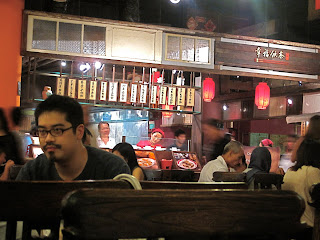 Really, I’ve been a tightly wound ball of nerves ever since I learned that I would go to Geneva by myself to deliver statements at the UNHRC. Some of that stress lifted after the first few days of meetings, but my long-held fear of public speaking was keeping my stomach in knots. Since my first statement was not supposed to happen until Thursday, I figured I would have ample time to practice it in the days before I had to speak. However, other meetings and shifting schedules meant that my guide was still fixing the draft on Thursday morning.
Really, I’ve been a tightly wound ball of nerves ever since I learned that I would go to Geneva by myself to deliver statements at the UNHRC. Some of that stress lifted after the first few days of meetings, but my long-held fear of public speaking was keeping my stomach in knots. Since my first statement was not supposed to happen until Thursday, I figured I would have ample time to practice it in the days before I had to speak. However, other meetings and shifting schedules meant that my guide was still fixing the draft on Thursday morning.Finally, about 25 minutes before I was supposed to go, he came into the room with the statement and the requisite 20 copies for the translators. I stood in the back of the room reading and re-reading it out loud, all the while timing myself to see if I would be able to read it all within my two minute time limit. Just as I am about to sit down in the section for NGO speakers, my other guide lets me know what to do if I am interrupted—just mark my spot and continue on once the President gives me the go-ahead. This gave me pause, as I had not even imagined that possibility. I asked if it was likely to happen, to which he replied that he didn’t think so.
The chairs are quite heavy and unwieldy, and I was concerned for the elderly woman taking her time to get out of one of the only two NGO speakers’ seats. The speaker ahead of me on the list was using the other chair, and I waited nervously for this other lady to clear out of what would be my spot. Sometimes compassion is hard to come by when you’re consumed with fear. As I finally sat down and got situated the President gave me the floor. I pressed the button for the microphone and waited what seemed like minutes for the red light to turn on for me to speak.
How loud did I need to speak? Was I speaking too fast? Am I going to finish in time? Was that a gavel I just heard? I didn’t have my earpiece in, so it was difficult to hear when the President asked me to stop after just 30 seconds. I marked my spot, put on my earpiece, and waited to hear the member state’s point of order. The delegate said I was off topic for the discussion. The President asked that I please stick to the topic at hand then let me continue. It suddenly seemed as though I had everyone’s attention, as a point of order—only the second of the session—is some of the most excitement one might see during a day of otherwise dry diplomatic delivery.
I continued. Soon, I finished with some time to spare. Despite the struggle out from behind the heavy chair I felt as light as air. I did it! I actually did it! And the worst had happened, and it wasn’t even that bad! In fact, I think it actually helped my cause, as most listening agreed that it was a rather bogus point of order since I was on topic.
I rode on the rush of adrenaline all day. Any fears that I had about delivering the other two statements quickly dissipated. While it was frustrating and nerve-wracking to not have the statement earlier, I think it was probably for the best so that I didn’t overdo it. Later in the week I delivered my other two statements without interruption, and with fewer nerves. It felt great each time I could directly confront representatives of the country responsible for silencing so many of its citizens. Two minutes is not much time to confront a world power, but it is far more time than the thousands of silenced and disappeared have to face their captors. I’m willing to get over some sweaty palms and tight nerves for that.




